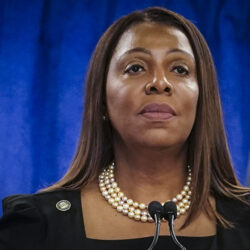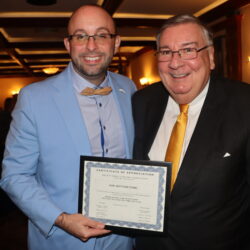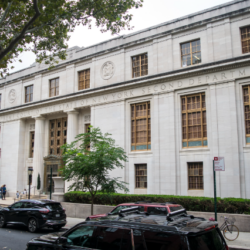
From the Brooklyn Aerie: August 23, 2012
No one seemed to know how to address Martha Washington when George Washington was elected our first President. The term often used — “Lady Washington.”
• • •
When in the mid-19th century Brooklyn’s Volunteer Fire Department started using its first four-wheel hose carrier, it was the volunteers who drew the carrier through the streets — not horses.
• • •
You would think that when the subways first reached Coney Island in 1915, it would take less time for Manhattanites to travel there, but such was not the case. Some of the ferries in the 19th century were able to make the trip in one hour of travel time, not much different than the subways do today.
• • •
One of the most visible anti-Semites in the late 19th century was Austin Corbin, a financier who among other things was president of the Long Island Rail Road and owner of the elite Brighton Beach Hotel in Coney Island. In an interview published in the New York Times he vented his anger at “Hebrews,” talked about the organization he founded, “The Society for the Prevention of Jews,” and said no Jew would be allowed to register in his hotel.
• • •
One of Brooklyn’s greatest philanthropists in the mid-19th century was Cornelius Heeney — among other things he founded the Brooklyn Benevolent Society — who didn’t confine his charity to his native city. He was one of the major contributors to the fund raised to construct St. Patrick’s Cathedral in Manhattan.
• • •
Clermont was actually the second name given to the world’s first commercially successful steamboat that Robert Fulton sailed up the Hudson River in 1807. Its original name was North River Steamboat.
• • •
If you want to know who were the “Blue Noses” who in the 1930s emigrated to Brooklyn and settled around Prospect Park West, they were fishermen who came to work on the fishing boats out of Sheepshead Bay.
• • •
When the British established Kings County in 1683, they chose Flatbush as the county seat, not Brooklyn.
• • •
Overnight, when the consolidation took place in 1898 merging Brooklyn, Manhattan, Queens, the Bronx and Staten Island into Greater New York, the new city with its 327 square miles and an almost 2.5 million population became the second biggest city in the world, topped only by London, England.
• • •
When the demolition company started to tear down Ebbets Field in 1960, it painted its wrecking ball to resemble a baseball.
• • •
No one knows how a watercolor map of Brooklyn made in the 17th century by Jacques Cortelyou, the surveyor general of New Amsterdam, turned up in an Italian villa in the 1930s, but it did, and because the villa had the name of Villa Castello, that is the name given to the map, i.e. the Costello Plan.
• • •
Washington Roebling, the chief engineer of the Brooklyn Bridge, saw no need for the gala celebration held at the Bridge’s opening in 1883 when everything else in New York and Brooklyn shut down, and among the many celebrities attending were the President of the United States, Chester Arthur, and the Governor of New York, Grover Cleveland. “What’s all the fuss about,” he said. “Why don’t they just post a sign that says ‘It’s Open.’”
Leave a Comment
Leave a Comment


